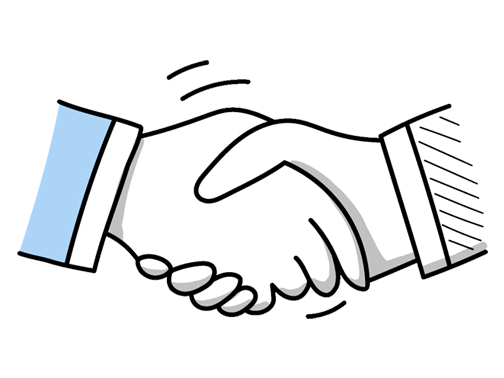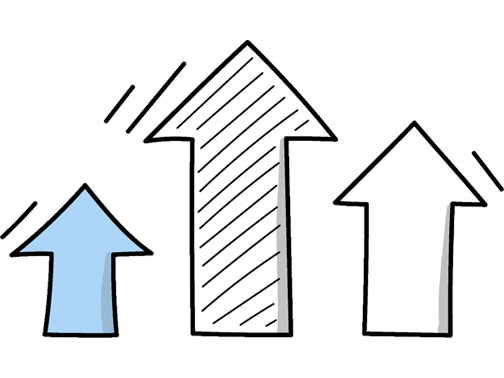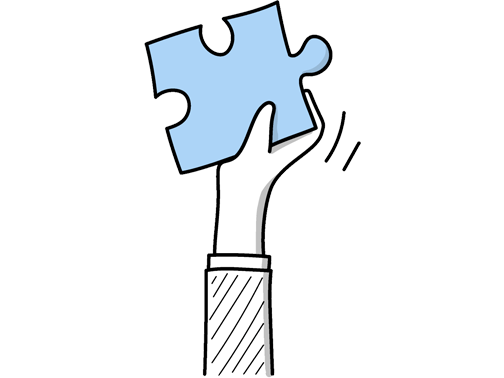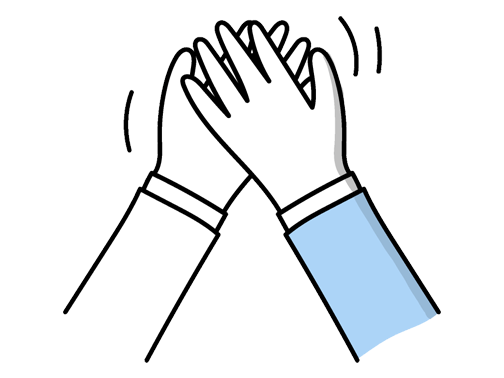Painter Interview Questions (2025 Guide)
Find out common Painter questions, how to answer, and tips for your next job interview
Practice Interviews Online - Identify your strengths and weakness in a realistic Painter mock interview, under 10 minutes
Practice Now »Painter Interview Questions
Employers ask this question to see if you understand the importance of proper preparation and material selection for a long-lasting paint job. You need to say that you thoroughly clean and sand surfaces before painting, choose the right paint for the environment, and regularly inspect your work to ensure consistent quality and durability.
Example: To make sure every paint job lasts and looks great, I start by thoroughly cleaning and repairing surfaces, removing old paint or any dirt. I pick the right type of paint for the job, whether it’s weather-resistant for outdoors or smooth finish inside. Throughout the work, I regularly step back to check even coverage and touch up any spots. It’s this attention to detail that helps my work stand the test of time.
Hiring managers ask this to gauge your level of expertise and familiarity with professional painting tasks. You need to clearly state your total years of professional experience and, if possible, mention key projects or types of painting work you’ve done to demonstrate your skills.
Example: I’ve been working as a professional painter for around five years now. During this time, I’ve handled everything from residential interiors to commercial exteriors, which has helped me develop a good eye for detail. For example, I recently completed a large renovation project where precision and efficiency were key, and I’m confident my experience would be a strong fit for this role.
Questions like this assess your ability to communicate effectively and maintain trust with clients throughout a project. You need to explain that you provide clear, honest updates about timelines and any possible delays, set realistic expectations about what the work will involve, and stay responsive to client concerns.
Example: I find it’s key to keep clients in the loop from the start, being upfront about how long the job will take and any hiccups that might come up. I aim to be clear about what the finished work will look like, so there are no surprises. If concerns arise, I make sure to respond quickly—once I repainted a porch where the weather caused delays, and regular updates helped keep the customer happy throughout.
This question helps the interviewer understand what drives your passion and consistency as a painter. You need to say that you are motivated by pride in delivering high-quality paintwork, staying focused to complete projects on time, and continuously improving your skills through feedback.
Example: What drives me is a genuine pride in delivering a job well done. Knowing that every brushstroke contributes to a finished space that looks great and lasts inspires me to stay focused and consistent. I also enjoy learning new techniques and improving my skills, which keeps the work interesting and helps me tackle challenges confidently. Seeing positive results and happy clients really motivates me to keep giving my best each day.
What they want to know is if you can handle multiple tasks efficiently and keep projects on track. You need to say that you plan your daily activities carefully, use tools like checklists to stay organized, and communicate regularly with clients or supervisors about your progress and any challenges.
Example: I start by breaking the project into smaller tasks, tackling the most important ones first to stay on track. I keep an open line of communication with the team to update them on progress or any issues early on. Staying organized with a clear plan helps me stay focused, especially when deadlines loom. For example, on a recent job, this approach helped me finish ahead of schedule without compromising quality.
Employers ask this to ensure you prioritize safety and follow proper protocols to prevent accidents and health hazards. You need to explain that you always use protective gear, follow guidelines, and inspect your workspace to maintain a safe environment.
Example: To ensure my work meets safety standards, I always start by checking the area for hazards and wearing the right protective gear. I make sure ladders and scaffolding are secure and follow any site-specific guidelines. For example, on a recent job, I noticed uneven flooring and flagged it before painting to prevent accidents. Staying aware and cautious helps me keep both myself and others safe throughout the project.
Interviewers ask this to see how you manage conflict and maintain professionalism. You should say that you listen carefully to the client's concerns, take responsibility, and calmly offer solutions to fix the issue.
Example: If a client isn’t happy, I first listen carefully to understand exactly what they’re concerned about. I stay calm and take responsibility, then discuss how we can fix it, whether that’s touching up or making adjustments. For example, once a customer wanted a colour tweaked after drying, and I was able to repaint a section quickly, which they appreciated. Keeping things professional helps build trust, even when things don’t go as planned.
Employers ask this to see if you have advanced skills and problem-solving ability beyond standard painting tasks. In your answer, briefly describe the specialized techniques you used, how you adapted to challenges, and the positive results your skills brought to the project.
Example: Yes, I worked on a restoration project where I used decorative glazing techniques to replicate aged finishes. It was tricky matching the original textures, but I practiced layering and blending colors carefully. This attention to detail helped us preserve the building’s character, and the client was pleased with how authentic the results looked. It was rewarding to apply those skills in a way that respected the heritage of the space.
Employers ask this to see how you handle quality control and problem-solving. You should explain that you assess the imperfections carefully and use appropriate techniques, like sanding and applying touch-up paint, to ensure a smooth and flawless finish.
Example: If I notice imperfections after the paint has dried, I first assess whether it’s a minor issue like dust or uneven coverage. Often, a light sanding followed by a touch-up can fix it smoothly. For example, on a previous job, a small bubble appeared after drying—sanding it down and applying a thin coat made the finish flawless. It’s important to be patient and precise to maintain quality.
This interview question aims to see if you are dedicated to delivering high-quality work and exceeding client expectations. In your answer, describe a specific situation where you took extra steps to ensure the client was happy and explain the positive outcome.
Example: There was a time when a client wanted their living room painted before a family gathering. I finished earlier than planned and took the extra time to carefully clean up and touch up small details they hadn’t mentioned. They were really pleased that the room looked perfect and ready for their guests without any hassle, which meant a lot to them. It’s rewarding to go that extra mile.
Hiring managers ask this question to see how your experience and skills have led to successful outcomes and satisfied clients. You need to describe specific painting projects you completed, emphasize positive feedback or results, and mention how you overcame any challenges during the work.
Example: In my previous role, I painted a series of residential homes where clients praised the attention to detail and clean finishes. On one project, I adapted quickly when unexpected weather delayed work, rearranging the schedule to meet the deadline without compromising quality. Another time, I refreshed a commercial space, improving its appeal and helping the business attract more customers. These experiences taught me to stay flexible and focused on delivering great results.
This question shows your understanding of professionalism and safety on the job. You need to explain how you clean tools regularly, organize materials clearly, and follow safety rules to keep the workspace safe and efficient.
Example: I make it a point to tidy up my tools and brushes throughout the day, which keeps everything ready for use and prevents damage. I also keep paints and materials neatly arranged, so I can find what I need quickly without wasting time. Staying on top of cleanliness not only helps me work safely but also ensures the space feels professional and welcoming for everyone on site.
Hiring managers ask this to see if you understand surface preparation and problem-solving. You need to say that you assess the surface for cleanliness and damage, then properly clean or sand it to ensure paint sticks well.
Example: If paint isn’t sticking well, I first check the surface for dirt, grease, or moisture—these can cause issues. I make sure it's properly cleaned and sanded if needed to create a good key for the paint. Once prepped, I sometimes use a suitable primer to improve adhesion. For example, on an old wooden door, thorough sanding and priming made all the difference before applying the final coats.
Hiring managers ask this to ensure you prioritize safety and environmental responsibility in your work. You need to explain that you follow proper safety protocols by using protective gear and dispose of paint thinners according to local hazardous waste regulations.
Example: When working with paint thinners, I always ensure good ventilation and wear gloves to stay safe. For disposal, I follow local guidelines carefully, never pouring them down drains. Often, I take leftover thinners to a designated hazardous waste facility or collection point. This way, it’s safe for the environment and prevents any risks on site. It’s about being responsible and keeping the workspace clean.
Interviewers ask this to understand your attention to detail and knowledge of proper preparation, which ensures a quality, lasting paint job. You need to explain that you assess the surface condition, clean it thoroughly, repair any damage, and apply primer before painting.
Example: Sure. First, I assess the surface to identify any issues like cracks or old paint that needs stripping. Then I clean the area thoroughly, removing dust and grease. Next, I sand it down to create a smooth base, filling any holes or imperfections with filler. Once dry, I sand again for an even finish. Preparing well ensures the paint adheres properly and lasts longer, like on a recent kitchen renovation I worked on.
Interviewers ask this question to see if you are open to learning and improving your skills. You need to say that you listen carefully to feedback, use it to enhance your work, and view criticism as an opportunity to grow.
Example: I see feedback as a valuable tool to improve my work. When someone points out areas that could be better, I listen carefully and consider their perspective. For example, on a recent job, a client suggested a different color finish, and after trying it, the result was much better. Being open to constructive criticism helps me grow and ensures the final job meets, or even exceeds, expectations.
Interviewers ask this to gauge your practical knowledge and suitability for specific projects. You need to clearly mention the types of paints and finishes you’ve worked with and how that experience aligns with the job requirements.
Example: I’ve worked with a wide range of paints, from water-based emulsions for interior walls to durable oil-based paints for woodwork. I’m comfortable applying different finishes, like matte for a subtle effect or satin for a bit of sheen, depending on the project. For example, I’ve used gloss finishes on doors and trim to highlight details while keeping walls smooth with eggshell. It’s all about matching the right finish to the space.
Questions like this help interviewers see how you handle challenges and adapt on the spot. You need to clearly explain the unexpected issue you faced, the actions you took to fix it, and the successful result or lesson you gained from the experience.
Example: On one job, I found the surface had hidden damp patches that weren’t noticeable at first. I took time to properly dry and treat the area before painting, ensuring the finish wouldn’t peel later. This extra step meant the client was happy with a lasting result, and it taught me to always inspect surfaces thoroughly before starting to avoid surprises.
Questions like this assess your ability to manage time and maintain quality under pressure. You need to say that you prioritize tasks by deadlines, communicate regularly with clients, and focus on details to deliver excellent work.
Example: When juggling several painting projects, I map out each job’s deadlines and focus on what needs doing first. I keep in touch with clients to update them on progress and any potential changes. By staying organised and paying close attention to every brushstroke, I make sure each project is completed to a high standard. For example, on a recent job, this approach helped me finish two homes on time without sacrificing quality.
Interviewers ask this to see how you handle difficulties and solve problems in your work. You need to briefly describe the challenge, how you approached it, and the successful outcome.
Example: One challenging project was renovating an old Victorian terrace. The walls had multiple layers of uneven paint and unexpected cracks. Careful preparation was key—sanding down old surfaces and filling gaps while preserving original moldings. It took patience and attention to detail, but the final finish brought the character of the house back to life, which made the effort worthwhile.
Employers ask this to see how you handle unique client needs and ensure satisfaction while maintaining quality. You need to say that you listen carefully, clarify the requirements, and adapt your techniques to meet the client’s vision without compromising the work.
Example: When a client has unusual requests, I listen carefully to understand exactly what they want and why. Then I assess how to best bring their vision to life while ensuring quality and durability. For example, I once adapted a traditional paint technique to match a client’s unique wallpaper pattern, which really made the space stand out and left them happy with the result. Communication and flexibility are key throughout.
This question helps the interviewer understand your ability to stay motivated and maintain quality during routine work. You need to say that you stay focused by setting small goals and taking short breaks to refresh your mind.
Example: I find that breaking the work into small goals helps keep me focused. For example, when painting large walls, I concentrate on one section at a time, which makes the task feel more manageable. I also try to stay mindful of the quality in each stroke, which keeps me engaged and prevents my mind from wandering. It’s about finding a rhythm and taking pride in the consistency of the finish.
Interviewers ask this question to understand your versatility and experience with different painting conditions. You need to mention the specific environments you've worked in and briefly highlight any unique challenges or skills required in each.
Example: I’ve worked in a variety of settings, from cozy homes to busy offices and factory spaces. Each environment comes with its own challenges, like navigating tight corners in residential rooms or handling larger surfaces in commercial buildings. I enjoy adapting my approach to suit the space and making sure the finish is both practical and visually appealing. For example, I recently completed a refurbishment in a retail store that required careful attention to detail and timing.
Employers ask this to see how you ensure clear understanding and client satisfaction. You need to say that you actively listen, ask clarifying questions, and provide regular updates to make sure the project meets their expectations.
Example: I start by listening carefully to what the client wants and ask questions to clarify their vision. I keep them updated throughout the project, whether it’s about progress or any challenges. For example, I once worked with a homeowner who changed their colour choice midway, so I made sure to discuss how that would affect timing and costs upfront. Clear, honest communication helps build trust and ensures we’re both on the same page.
Questions like this assess your understanding of the various tools needed for specific painting jobs and show your practical knowledge. You need to explain which tools you use for each task and why, demonstrating that you choose equipment thoughtfully to achieve the best results.
Example: When tackling different painting jobs, I select tools based on the task. For detailed work, like trim or corners, I use angled brushes to get clean lines. Rollers are great for covering large walls quickly and smoothly. For prep, I rely on sandpaper and scrapers to ensure surfaces are ready. Sometimes, a sprayer comes in handy for even coats on bigger projects. It’s about matching the right tool to the job for the best finish.
Ace your next Painter interview with even more questions and answers
Common Interview Questions To Expect
The interviewer is looking to see how you found out about the job opportunity and what sources you are using to search for jobs. Be honest and specific in your response.
Example: I actually found out about this position through a job posting on a popular art website that I check regularly. I've been actively searching for painting opportunities and this one really caught my eye. I'm always on the lookout for new opportunities to showcase my work and grow as an artist.
The interviewer is looking for examples of problem-solving skills, conflict resolution abilities, and how you handle challenges in the workplace. Be honest and provide specific details about the situation, your actions, and the outcome.
Example: Sure! One challenge I faced at work was when a client was unhappy with the color scheme I had chosen for their project. I listened to their feedback, discussed alternative options with them, and ultimately found a solution that we were both happy with. It taught me the importance of effective communication and flexibility in my work.
The interviewer is looking for your long-term career goals and aspirations. You can answer by discussing your desire for growth within the company, further developing your skills, or taking on more responsibilities.
Example: In five years, I see myself continuing to grow as a painter and honing my skills even further. I hope to take on more challenging projects and possibly even mentor newer artists. Ultimately, I aim to become a respected and well-known figure in the art community.
The interviewer is looking for examples of how you prioritize tasks, manage your time effectively, and handle stress in a fast-paced environment. Be honest and provide specific examples from your past experiences.
Example: Yes, I am able to handle multiple responsibilities at once. In my previous role as a painter, I would often have to juggle multiple projects at the same time while ensuring each one was completed on schedule. I prioritize tasks based on deadlines and importance, allowing me to effectively manage my time and handle any stress that may arise.
The interviewer is looking for examples of how you have collaborated with others, communicated effectively, and contributed to achieving team goals. Be prepared to discuss specific projects and your role within the team.
Example: Sure! In my previous role as a painter, I worked closely with a team of other painters to complete large-scale projects on time and within budget. I communicated effectively with my team members to ensure we were all on the same page and worked together to achieve our goals. My ability to collaborate and contribute to the team's success was key in delivering high-quality work.
Company Research Tips
The company's website is a great place to start your research. Look for information about the company's history, mission, and values. Pay special attention to any sections about their services, particularly those related to painting. This will give you a good understanding of the type of work they do and the standards they uphold. Also, check out their portfolio or project section to see examples of their work and to get a sense of their style and quality.
Tip: Look for any news or blog sections on the website. These can provide valuable insights into the company's recent activities and future plans.
Social media platforms can provide a wealth of information about a company. Check the company's profiles on platforms like LinkedIn, Facebook, and Instagram. Look at their posts and the comments to get a sense of how they interact with their customers and the public. This can give you insights into their customer service and reputation. Also, look for any posts related to painting projects to get a better understanding of their work.
Tip: Don't forget to check out the company's LinkedIn page. It can provide valuable information about the company culture and the people who work there.
Online reviews and testimonials can provide valuable insights into a company's reputation and the quality of their work. Look for reviews on platforms like Google, Yelp, and Trustpilot. Pay attention to both positive and negative reviews, and look for any common themes. This can give you a good sense of what customers think about the company and their painting services.
Tip: Remember to take online reviews with a grain of salt. While they can provide valuable insights, they may not always provide a complete picture of the company.
Understanding the painting industry and the company's competitors can give you valuable context for your interview. Look for industry reports and news articles to get a sense of the current trends and challenges in the painting industry. Also, research the company's main competitors to understand how they differentiate themselves.
Tip: Use tools like Google News and industry-specific databases to find relevant industry reports and news articles.
What to wear to an Painter interview
- Clean, neat clothing
- Comfortable shoes
- Avoid bright colours
- Avoid wearing paint-stained clothes
- Smart casual attire
- Avoid wearing jewellery
- Neatly groomed facial hair
- Clean, short fingernails





